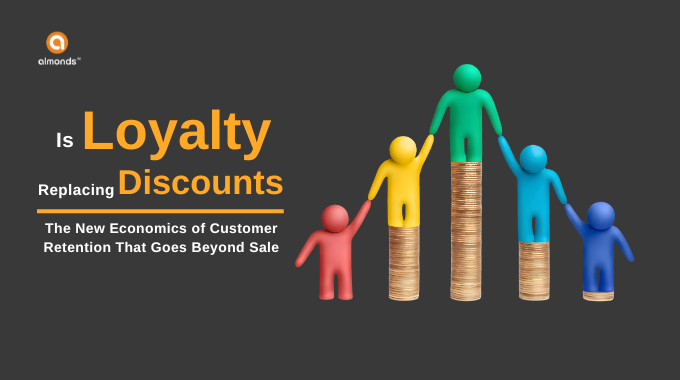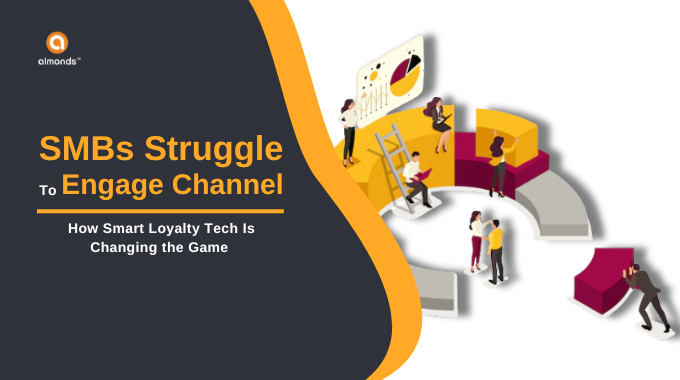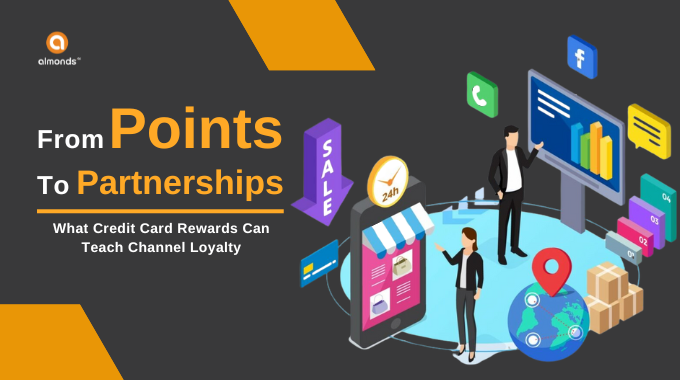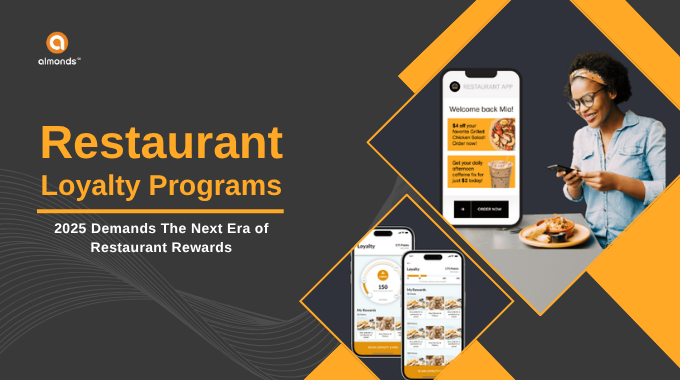For decades, FMCG loyalty programs in India have relied heavily on trade discounts, margin schemes, quarterly targets, and cash incentives to encourage channel partners to increase sales. However, by 2025, this traditional model is starting to show cracks.
With rising distribution costs, shrinking trade margins, and inconsistent partner performance, the old “discount-based” approach is becoming unsustainable for brands and uninspiring for channel partners.
At the same time, global data from Valuedynamx shows that loyalty program rewards are accelerating at double-digit growth, not just in consumer retail, but also in B2B ecosystems.
The implication is clear:

The End of Discount-Driven Channel Strategy
Indian brands spend anywhere between 3–12% of revenue on trade discounts and schemes. Yet much of this investment disappears into:
- Stock-pushing instead of genuine demand creation
- Inconsistent participation
- Lack of transparency in reward outcomes
- Channel partner disengagement once schemes end
This mirrors what the global retail sector saw during BFCM:
 Channel partners today want sustained earning, not one-time incentives. Just as consumers are shifting from discount-chasing to value-building, retailers, mechanics, and distributors are increasingly preferring predictable, transparent, ongoing rewards over temporary trade schemes.
Channel partners today want sustained earning, not one-time incentives. Just as consumers are shifting from discount-chasing to value-building, retailers, mechanics, and distributors are increasingly preferring predictable, transparent, ongoing rewards over temporary trade schemes.
The Rise of the Channel Loyalty Economy
Across India’s FMCG, packaged foods, beverage, and personal care sectors, a clear shift is emerging: “Channel partners now treat points, cashback, and tier-based rewards as an extension of their earnings, not as a bonus.”
Similar to household financial planning in consumer loyalty:
- Small retailers see loyalty rewards as income padding
- Distributors prefer predictable incentives over arbitrary schemes
- Field sellers respond better to immediate gratification than delayed benefits
This has transformed loyalty from a motivational tool to a business planning tool for the channel ecosystem.
Brands that adopt structured, digital loyalty programs see:
- 30–40% higher participation in channel initiatives
- More frequent order placements
- Better adoption of new SKUs
- Higher transparency and trust in partner relationships
Simply put, loyalty is no longer a side activity — it’s becoming the engine of channel engagement.
Why Loyalty Programs Work Better Than Discounts in B2B
1. Protects Margins While Rewarding Only Productive Behaviors
Trade discounts cut margins for every partner, even those who don’t push sales.
Loyalty rewards only active contributors.
This helps brands:
- Lower trade spend
- Drive behavior-linked incentives
- Eliminate unnecessary payouts
- Improve ROI on channel investments
2. Enables Personalization at Partner Level
Unlike traditional trade schemes (same for all), loyalty offers can be:
- Region-specific
- Store-type specific
- Category-specific
- Performance-specific
This personalization increases the perceived fairness of rewards — a major factor in B2B loyalty.
3. Builds Long-Term Engagement Instead of Quarterly Spikes
Trade-led performance peaks only during scheme periods.
Loyalty-led engagement stays continuous.
Earning → Redeeming → Re-engaging creates a self-sustaining performance loop.
4. Helps Drive Everyday Channel Behavior, Not Just Campaign-Based Targets
This is the biggest shift. High-performing brands now use loyalty to reward:
- Consistent order placement
- Proper merchandising
- Product visibility
- Digital invoice uploads
- QR scans
- New product trials
- Retailer referrals
This lifts everyday execution quality, the real driver of FMCG market share.
The Shift Toward Everyday Channel Loyalty
The Indian channel ecosystem is now adopting what global research calls a continuous loyalty cycle. Instead of only rewarding end-of-quarter achievements, brands now focus on:
- Daily performance
- Consistent actions
- Micro-achievements
- Regular engagement touchpoints
This helps brands:
- Build habit loops
- Shape predictable behavior
- Reduce drop-offs between schemes
- Create emotional connection with partners
Importantly, this approach improves the quality of last-mile retail execution, an area where 70% of FMCG brands struggle.
How Leading FMCG Brands Are Reimagining Channel Incentives
The most progressive brands are moving from trade-heavy to loyalty-led channel strategies. Examples include:
- Merchant-funded rewards to reduce brand payout
- Tier-based systems (Gold, Platinum) for long-term retention
- Digital invoice validation for instant point credit
- Gamified challenges for new SKU push
- Card-linked rewards for distributors
- WhatsApp engagement flows for retailers/mechanics
This approach is radically more efficient than discounting because it:
- Enhances transparency
- Reduces fraud
- Increases partner accountability
- Reinforces brand affinity
Even financial services, traditionally non-emotional, use loyalty to drive engagement in low-interest categories like business banking and payments. If loyalty can succeed there, FMCG stands to benefit even more.
Top 3 B2B Shifts Defined Channel Loyalty in 2025
Based on industry trends, 2025 is expected to reshape channel engagement in three major ways:
- Loyalty Will Replace a Significant Portion of Trade Discounts: Brands will invest less in flat discounts and more in behavior-based rewards.
- High-Frequency Retailers Will Drive the Most Engagement: Kirana stores, chemists, and small general trade outlets will redeem the highest value as they buy frequently.
- Personalized Partner Rewards Will Outperform Generic Schemes

Brands that personalize rewards at the channel partner level will win.
Final Thought
The global retail shift away from discount-led strategy is now reaching the Indian B2B ecosystem. Brands that continue to rely on discounts will face:
- Unstable margins
- Inconsistent partner participation
- Low-quality retail execution
- Declining influence over channel behavior
Brands that embrace data-driven channel loyalty will achieve:
- Stronger partner relationships
- Better on-ground visibility
- Consistent category growth
- Higher sales predictability
- Loyal retailer & distributor base
And platforms like Channelverse by Almonds Ai will play a central role in powering this transformation, making loyalty not just a reward mechanism, but a strategic asset for channel performance.
FAQs
Q1. Why are FMCG brands shifting from trade discounts to loyalty programs?
FMCG brands are moving away from traditional trade discounts because discounts erode margins and create short-term spikes, not long-term engagement. Channel loyalty programs reward actual behavior, offer better ROI, provide transparency, and help brands motivate retailers, distributors, and field agents consistently.
Q2. Do loyalty programs improve channel partner performance?
Yes, SaaS based loyalty programs improve channel partner performance by offering instant rewards, personalized incentives, gamified challenges, and transparent dashboards. Brands that adopt structured loyalty systems see 30–40% higher participation and better on-ground execution.
Q3. What is the biggest advantage of loyalty over discounts in B2B?
The biggest advantage is behavior-linked rewards. Loyalty programs reward partners only for productive actions—invoice uploads, order frequency, visibility tasks—while discounts apply to everyone, even low performers. This makes loyalty more targeted, fair, and cost-efficient.
Q4. How does AI improve channel loyalty programs?
AI enhances channel loyalty by personalizing incentives, predicting partner inactivity, detecting fraud, and automating validations. It helps brands target the right partners with the right rewards, boosting retention and sales without increasing trade spend.
Q5. What should FMCG brands look for in a channel loyalty solution?
Brands should look for features like instant rewards, AI-based personalization, fraud detection, WhatsApp-first engagement, real-time dashboards, automated invoice validation, and flexible reward marketplaces. Platforms like Channelverse offer all of these in one ecosystem.
Q6. Can loyalty programs replace trade discounts entirely?
Not immediately, but they can significantly reduce discount dependency. Loyalty programs convert trade spend into performance-driven rewards, helping brands maintain margin discipline while motivating partners more effectively than flat discounts.







